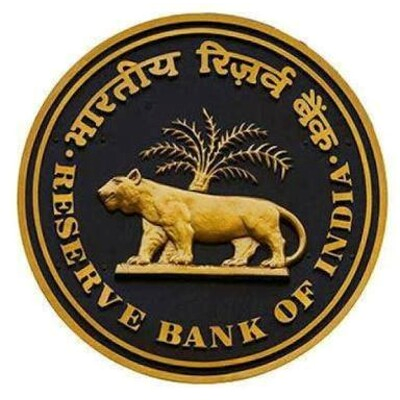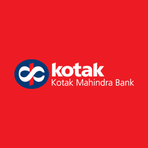The Shifting Sands of India's Banking Landscape
February 13, 2025, 4:50 am
India's banking sector is a dynamic arena, where fortunes can change with the flick of a pen. Recent reports reveal a storm brewing in the realm of private banks, particularly concerning small loans. The winds of economic change are blowing, and the forecast is not entirely sunny.
Private banks in India are bracing for a rise in defaults on small and personal loans. This trend is expected to persist until mid-2025. The roots of this issue lie in the sluggish economic growth, projected at 6.4% for the fiscal year ending in March. This marks the slowest pace in four years, a clear signal that the economy is not firing on all cylinders.
The bad loan ratios are creeping up. In the last quarter of 2024, these ratios rose between 1 and 14 basis points, reaching between 1.42% and 4.7% of total loans. This increase is a red flag for banks, particularly as they tighten their lending rules. The cautious approach is evident in the slowing pace of bank credit growth, which has now slowed for six consecutive months.
The landscape is further complicated by the rural economy's struggles. Aggressive lending practices and the disruptions caused by national and provincial elections have led to a spike in defaults. Yet, there is a glimmer of hope. Rural demand has shown signs of revival, thanks to a good monsoon season. This could be the lifeline that the rural economy needs.
Kotak Mahindra Bank, one of the key players in this sector, is keeping a close eye on microcredit loans. These loans, often given to rural borrowers for small business needs, are under pressure. The bank's CEO noted that the stress in this segment might take "at least another quarter" to normalize. Meanwhile, IndusInd Bank has also felt the pinch, with its gross bad loan ratio climbing to 2.25%.
Despite these challenges, the Reserve Bank of India (RBI) is optimistic. It predicts that the bad loan ratio for the sector will rise to 3% by March 2026, a modest increase from a 12-year low of 2.6% in September 2024. This tempered outlook suggests that while challenges exist, they may not be insurmountable.
The banking sector index has taken a hit, down 1.4% this year, underperforming the broader market. However, some analysts see a silver lining. Mirae Asset Investment Managers has a positive outlook for the sector over the next 18-24 months, citing attractive valuations. The belief is that the peak of stress in the unsecured and microfinance segments is largely behind us.
In a separate but related development, Kotak Mahindra Bank has recently had regulatory restrictions lifted by the RBI. These restrictions were imposed due to serious violations of regulatory norms, particularly in IT governance. The bank has since taken remedial measures, including an external audit to validate its compliance. With the lifting of these restrictions, Kotak can now resume onboarding new customers and issuing fresh credit cards.
This turn of events is significant. It highlights the importance of robust IT infrastructure in today's banking landscape. The RBI's decision to impose restrictions was not taken lightly. It reflects the regulator's commitment to ensuring that banks operate within the bounds of safety and soundness.
The challenges faced by Kotak Mahindra Bank serve as a cautionary tale for the industry. The bank's struggles with IT risk management and data security are reminders that the digital age brings its own set of challenges. Frequent outages in its online and digital banking channels led to customer inconveniences, a scenario no bank can afford.
The RBI's approach to imposing restrictions is a measure of last resort. It underscores the regulator's commitment to protecting the public interest. The banking sector must heed this warning. Compliance with regulatory norms is not optional; it is essential for survival.
As the dust settles, the future of India's banking sector remains uncertain. The interplay between economic growth, loan defaults, and regulatory compliance will shape the landscape in the coming months. Banks must navigate these turbulent waters with caution and foresight.
In conclusion, the Indian banking sector is at a crossroads. The rise in small loan defaults signals a need for vigilance. Yet, the lifting of restrictions on Kotak Mahindra Bank offers a glimmer of hope. The road ahead may be rocky, but with careful navigation, there is potential for recovery and growth. The sands of time are shifting, and only those who adapt will thrive in this ever-changing environment.
Private banks in India are bracing for a rise in defaults on small and personal loans. This trend is expected to persist until mid-2025. The roots of this issue lie in the sluggish economic growth, projected at 6.4% for the fiscal year ending in March. This marks the slowest pace in four years, a clear signal that the economy is not firing on all cylinders.
The bad loan ratios are creeping up. In the last quarter of 2024, these ratios rose between 1 and 14 basis points, reaching between 1.42% and 4.7% of total loans. This increase is a red flag for banks, particularly as they tighten their lending rules. The cautious approach is evident in the slowing pace of bank credit growth, which has now slowed for six consecutive months.
The landscape is further complicated by the rural economy's struggles. Aggressive lending practices and the disruptions caused by national and provincial elections have led to a spike in defaults. Yet, there is a glimmer of hope. Rural demand has shown signs of revival, thanks to a good monsoon season. This could be the lifeline that the rural economy needs.
Kotak Mahindra Bank, one of the key players in this sector, is keeping a close eye on microcredit loans. These loans, often given to rural borrowers for small business needs, are under pressure. The bank's CEO noted that the stress in this segment might take "at least another quarter" to normalize. Meanwhile, IndusInd Bank has also felt the pinch, with its gross bad loan ratio climbing to 2.25%.
Despite these challenges, the Reserve Bank of India (RBI) is optimistic. It predicts that the bad loan ratio for the sector will rise to 3% by March 2026, a modest increase from a 12-year low of 2.6% in September 2024. This tempered outlook suggests that while challenges exist, they may not be insurmountable.
The banking sector index has taken a hit, down 1.4% this year, underperforming the broader market. However, some analysts see a silver lining. Mirae Asset Investment Managers has a positive outlook for the sector over the next 18-24 months, citing attractive valuations. The belief is that the peak of stress in the unsecured and microfinance segments is largely behind us.
In a separate but related development, Kotak Mahindra Bank has recently had regulatory restrictions lifted by the RBI. These restrictions were imposed due to serious violations of regulatory norms, particularly in IT governance. The bank has since taken remedial measures, including an external audit to validate its compliance. With the lifting of these restrictions, Kotak can now resume onboarding new customers and issuing fresh credit cards.
This turn of events is significant. It highlights the importance of robust IT infrastructure in today's banking landscape. The RBI's decision to impose restrictions was not taken lightly. It reflects the regulator's commitment to ensuring that banks operate within the bounds of safety and soundness.
The challenges faced by Kotak Mahindra Bank serve as a cautionary tale for the industry. The bank's struggles with IT risk management and data security are reminders that the digital age brings its own set of challenges. Frequent outages in its online and digital banking channels led to customer inconveniences, a scenario no bank can afford.
The RBI's approach to imposing restrictions is a measure of last resort. It underscores the regulator's commitment to protecting the public interest. The banking sector must heed this warning. Compliance with regulatory norms is not optional; it is essential for survival.
As the dust settles, the future of India's banking sector remains uncertain. The interplay between economic growth, loan defaults, and regulatory compliance will shape the landscape in the coming months. Banks must navigate these turbulent waters with caution and foresight.
In conclusion, the Indian banking sector is at a crossroads. The rise in small loan defaults signals a need for vigilance. Yet, the lifting of restrictions on Kotak Mahindra Bank offers a glimmer of hope. The road ahead may be rocky, but with careful navigation, there is potential for recovery and growth. The sands of time are shifting, and only those who adapt will thrive in this ever-changing environment.

